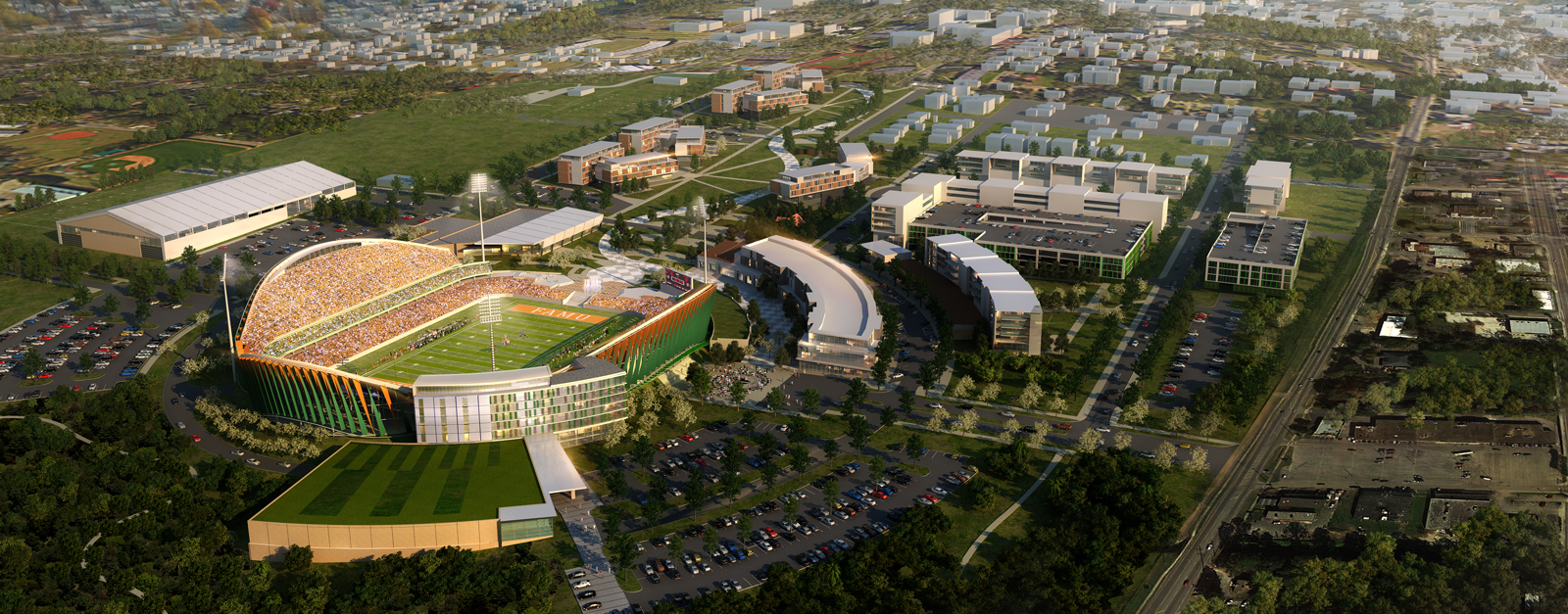+44 1234 56789 support@cmssuperheroes.com
Sustainable, Secure, Revolutionary
Integrating energy efficient methods into environmentally friendly designs
Ultimately, the innovative design solutions for the Development at Florida A&M University must respond to the overall environment by being sustainable and energy efficient. The design strategies will seek to reduce heating and cooling loads through passive means such as solar orientation, natural shading and ventilation. Our team has successfully incorporated green building techniques and high performance sustainable features in projects for decades.
Various high-performance, sustainable options will be modeled, tested and priced. Our experience has proven that it is far more efficient to plan for such features up front, rather than incorporating them into a building’s design later in the development process. Addressing environmental concerns early on enhances the opportunities for constructing higher performing projects and often saves money.
Sustainable Design Concepts:
- Achieving compliance with Title 24 and Energy Star through efficient electrical, plumbing, and mechanical systems
- Using local products and low VOC emitting materials with desirable amounts of recycled content
- Encouraging the use of public transportation, alternative transportation, and car-pooling
- Controlling light pollution by avoiding unshielded fixtures, using down-lighting techniques and designing less-intense lighting that still provides acceptable safety and security
- Maximizing day-lighting systems and views
- Implementing an indoor air quality management plan
- Designing a highly effective insulation envelope
- Exploring the use of underground geothermal systems
- Providing landscaping suitable to the microclimate and eliminates the need for irrigation systems
Efficient delivery, operation, and thoughtful design can be balanced with consideration of strategies that increase the lifecycle of the facilities, sustain energy and water savings, decrease expenses for students, provide for flexible uses and reduce environmental impact.
Advantages of this project’s scope, nature and location lend to a realistic goal of LEED-Gold Certification. The design team has already begun development of LEED checklists to focus the entire team holistically in meeting the requirements of the USGBC. LEED checklists will be reconciled at each stage in the design process in order to achieve compliance and manage costs. They will also assist the team in the selection of materials, use of renewable and recycled materials, selection of energy and water-conscious engineering solutions and overall site disturbance mitigation.
In developing a master plan concept for the site, we have paid particular attention to CPTED (Crime Prevention through Environmental Design) criteria. CPTED is a multi- disciplinary approach to deterring criminal behavior through environmental design. In our team’s initial planning work, we have looked carefully at key design strategies to provide for appropriate visibility, maximum use of natural lighting, and to provide ground floor spaces that are transparent and encourage community identity and passive security. As the project progresses, our final design process will also be undertaken using important CPTED principles.
Our team sought to design a community with a Live-Work-Play concept, a concept that is growing in worldwide popularity. This idea is rooted in believing that people are more satisfied living in a community that can fulfill most of their needs. Pinnacle is positioned to improve the quality of life by making a community that is accessible, recreational, sustainable, and profitable. Measuring the amount of traffic that could come from the development is one of the reasons why implementing this environmentally friendly concept was developed. Accenting a mixed-use building to our Pinnacle project was a great way to solidify a community that functioned as a Live-Work-Play environment.



